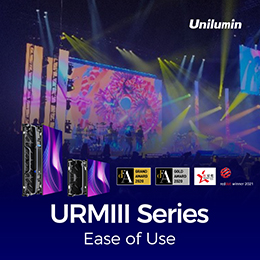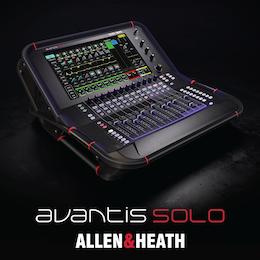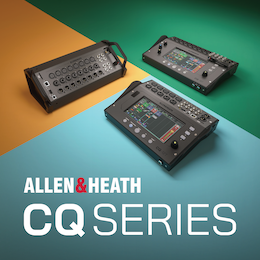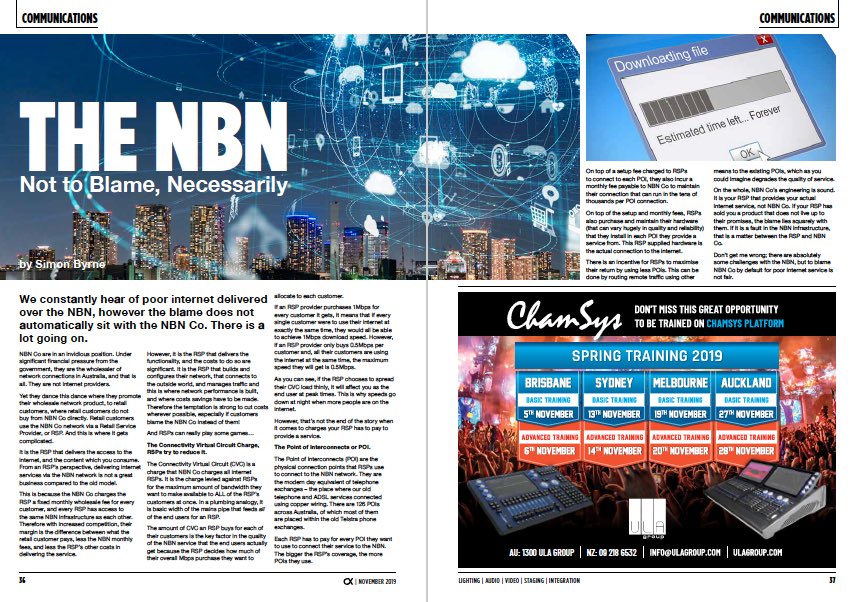Subscribe to CX E-News
COMMUNICATIONS
The NBN – Not to Blame, Necessarily
by Simon Byrne.
We constantly hear of poor internet delivered over the NBN, however the blame does not automatically sit with the NBN Co. There is a lot going on.
NBN Co are in an invidious position. Under significant financial pressure from the government, they are the wholesaler of network connections in Australia, and that is all.
They are not internet providers. Yet they dance this dance where they promote their wholesale network product, to retail customers, where retail customers do not buy from NBN Co directly.
Retail customers use the NBN Co network via a Retail Service Provider, or RSP. And this is where it gets complicated. It is the RSP that delivers the access to the internet, and the content which you consume.
From an RSP’s perspective, delivering internet services via the NBN network is not a great business compared to the old model. This is because the NBN Co charges the RSP a fixed monthly wholesale fee for every customer, and every RSP has access to the same NBN infrastructure as each other.
Therefore with increased competition, their margin is the difference between what the retail customer pays, less the NBN monthly fees, and less the RSP’s other costs in delivering the service.
However, it is the RSP that delivers the functionality, and the costs to do so are significant. It is the RSP that builds and configures their network, that connects to the outside world, and manages traffic and this is where network performance is built, and where costs savings have to be made.
Therefore the temptation is strong to cut costs wherever possible, especially if customers blame the NBN Co instead of them!
And RSPs can really play some games…
The Connectivity Virtual Circuit Charge, RSPs try to reduce it
The Connectivity Virtual Circuit (CVC) is a charge that NBN Co charges all internet RSPs. It is the charge levied against RSPs for the maximum amount of bandwidth they want to make available to ALL of the RSP’s customers at once.
In a plumbing analogy, it is basic width of the mains pipe that feeds all of the end users for an RSP.
The amount of CVC an RSP buys for each of their customers is the key factor in the quality of the NBN service that the end users actually get because the RSP decides how much of their overall Mbps purchase they want to allocate to each customer.
If an RSP provider purchases 1Mbps for every customer it gets, it means that if every single customer were to use their internet at exactly the same time, they would all be able to achieve 1Mbps download speed. However, if an RSP provider only buys 0.5Mbps per customer and, all their customers are using the internet at the same time, the maximum speed they will get is 0.5Mbps.
As you can see, if the RSP chooses to spread their CVC load thinly, it will affect you as the end user at peak times. This is why speeds go down at night when more people are on the internet. However, that’s not the end of the story when it comes to charges your RSP has to pay to provide a service.
The Point of Interconnects or POI
The Point of Interconnects (POI) are the physical connection points that RSPs use to connect to the NBN network. They are the modern day equivalent of telephone exchanges – the place where our old telephone and ADSL services connected using copper wiring.
There are 126 POIs across Australia, of which most of them are placed within the old Telstra phone exchanges. Each RSP has to pay for every POI they want to use to connect their service to the NBN. The bigger the RSP’s coverage, the more POIs they use.
On top of a setup fee charged to RSPs to connect to each POI, they also incur a monthly fee payable to NBN Co to maintain their connection that can run in the tens of thousands per POI connection.
On top of the setup and monthly fees, RSPs also purchase and maintain their hardware (that can vary hugely in quality and reliability) that they install in each POI they provide a service from. This RSP supplied hardware is the actual connection to the internet.
There is an incentive for RSPs to maximise their return by using less POIs. This can be done by routing remote traffic using other means to the existing POIs, which as you could imagine degrades the quality of service.
On the whole, NBN Co’s engineering is sound. It is your RSP that provides your actual internet service, not NBN Co. If your RSP has sold you a product that does not live up to their promises, the blame lies squarely with them. If it is a fault in the NBN infrastructure, that is a matter between the RSP and NBN Co.
Don’t get me wrong; there are absolutely some challenges with the NBN, but to blame NBN Co by default for poor internet service is not fair.
CX Magazine – Nov 2019 Entertainment technology news and issues for Australia and New Zealand – in print and free online www.cxnetwork.com.au
© CX Media
Related reading from CX Magazine:
Mission Critical Show Networking (March 2019)
https://www.cxnetwork.com.au/mission-critical-show-networking
Network LAN Scanning: See What’s Going On (March 2019)
https://www.cxnetwork.com.au/network-lan-scanning-see-whats-going-on
Networking – the Cables (March 2019)
https://www.cxnetwork.com.au/networking-the-cables
Wi-Fi and Data Security on Events (Nov 2019)
https://www.cxnetwork.com.au/wi-fi-and-data-security-on-events
The NBN – Not to Blame, Necessarily (Nov 2019)
https://www.cxnetwork.com.au/the-nbn-not-to-blame-necessarily
Integration Control – Don’t Make Me Think (July 2019)
https://www.cxnetwork.com.au/integration-control-dont-make-me-think
Power Over Ethernet (July 2019)
https://www.cxnetwork.com.au/power-over-ethernet
Can I Have Full House Lights Please? (July 2019)
https://www.cxnetwork.com.au/can-i-have-full-house-lights-please
Signal out of the Noise (May 2019)
https://www.cxnetwork.com.au/signal-out-of-the-noise
Comms – On Devices You Already Own (Nov 2018)
https://www.cxnetwork.com.au/comms-on-devices-you-already-own
Subscribe
Published monthly since 1991, our famous AV industry magazine is free for download or pay for print. Subscribers also receive CX News, our free weekly email with the latest industry news and jobs.














